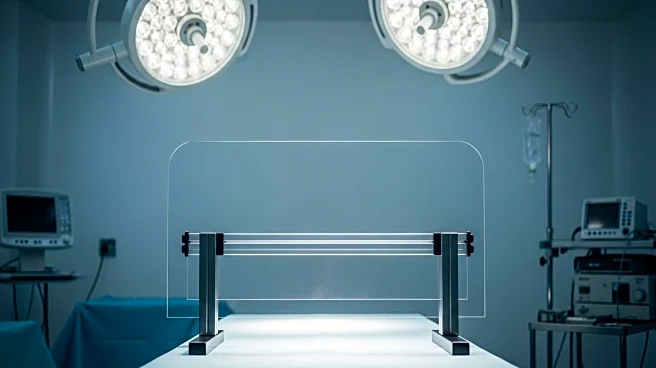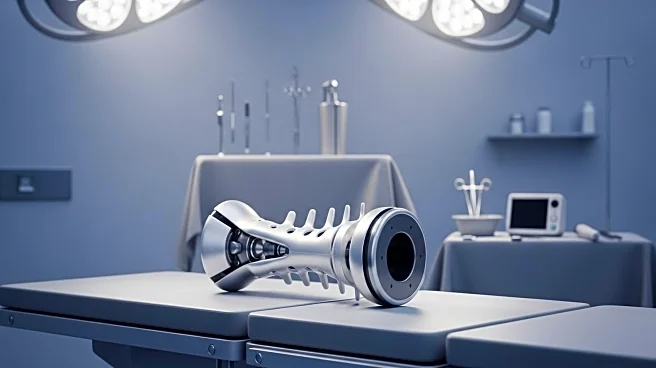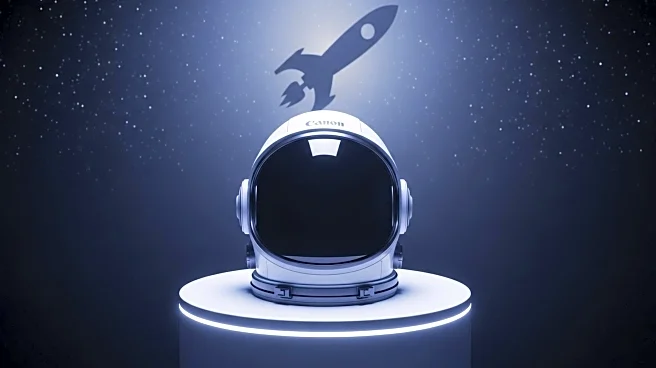What's Happening?
Intrinsic Therapeutics, Inc., a medical technology company, has announced a significant advancement in spinal surgery with the successful implantation of its Barricaid Annular Closure Device in patients undergoing awake surgery. This procedure, performed by Dr. Ernest E. Braxton Jr., a Board-Certified neurosurgeon in Vail, Colorado, marks the first time the device has been used without general anesthesia. The Barricaid device is designed to prevent reherniation and reduce the need for reoperations in patients with large annular defects following lumbar discectomy surgery. Awake spine surgery allows patients to remain conscious, providing real-time feedback to the surgeon, which can lead to faster recovery and reduced pain compared to traditional methods. This approach also minimizes the risks associated with general anesthesia, such as nausea and confusion.
Why It's Important?
The introduction of the Barricaid device in awake spine surgery represents a significant advancement in medical technology, potentially transforming the standard of care for lumbar discectomy patients. By reducing the risk of reherniation and the need for additional surgeries, this innovation could lead to substantial cost savings for healthcare systems and improve patient outcomes. The ability to perform these procedures without general anesthesia not only enhances patient safety but also accelerates recovery times, allowing patients to return to their daily activities more quickly. This development could influence surgical practices and encourage the adoption of awake surgery techniques, benefiting both patients and healthcare providers.
What's Next?
As the clinical acceptance of the Barricaid device grows, it is expected that more surgeons will adopt this technology in their practices. Intrinsic Therapeutics plans to continue supporting clinical studies to further validate the benefits of the Barricaid device. The company may also explore expanding the use of the device to other types of spinal surgeries. Surgeons and healthcare facilities might begin to integrate awake surgery techniques more broadly, potentially leading to a shift in how spinal surgeries are performed. This could prompt further research into the long-term outcomes of awake surgery and its impact on patient care.
Beyond the Headlines
The use of the Barricaid device in awake surgery could have broader implications for the medical field, particularly in the development of minimally invasive surgical techniques. This approach aligns with a growing trend towards patient-centered care, where minimizing recovery time and enhancing patient comfort are prioritized. Additionally, the success of this procedure may encourage further innovation in medical devices and surgical methods, potentially leading to new standards in various types of surgeries beyond spinal procedures.













